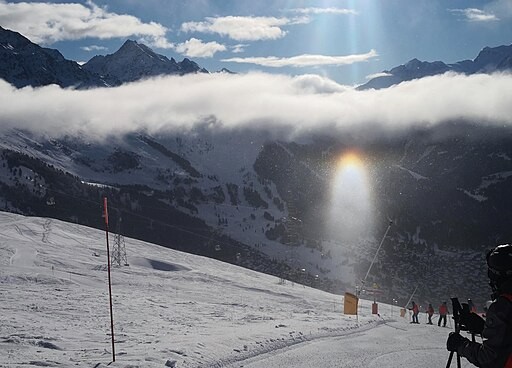Nature has always found its way to surprise humans, usually in strange phenomena that baffle experts. Just recently, an optical event that looks like an interdimensional portal was captured in Argentina.

The Unusual Glowing Spot
A video footage showing the optical phenomenon was captured by photographer Gaby Chavez at Cerro Catedral ski resort located in Patagonia, southern Argentina. The recording shows a circular glowing "portal" floating mid-air with flying snowflakes and sun's rays filtered through the cloud.
Although the sighting looks like a gateway seen in a science-fiction movie, this event is referred to as a subsun which develops from the reflection of the sun on a cloud of millions of ice crystals. In this situation, the ice crystals almost serve as a mirror for the sun's rays.
The subsun captured by Chavez shows several bright points surrounding the ball of light. They also match the ice crystals that move in the air, shining silently like mirrors. It can also be observed from the video that the density of the floating crystals decreases rapidly with distance from the center of the subsun.
READ ALSO: An Extraordinary Solar Halo Bewilders Local Residents
What is a Subsun?
According to the World Meteorological Organization, a subsun is an ice halo formed when sunlight is reflected from the plate-shaped ice crystals' upper and lower horizontal faces in clouds. It appears as a glowing white spot that resembles the Sun's reflected image on the surface of calm water. In this event, the sun's rays are reflected externally off the uppermost horizontal face or internally from the lowermost part.
It usually occurs in cold regions with clear conditions where the ice crystals allow the sunlight to pass through. As the sunlight reflects off the small ice crystals floating in the atmosphere, a strange halo is created. Since the ice crystals are usually not perfectly horizontal, the subsun is often seen in an elongated shape.
The ice crystals involved in this phenomenon exist in the form of hexagonal plates. In science, the kind of optical event created by sunlight is determined by the orientation held by the ice crystals in the atmosphere. Other factors can also affect it, such as the angle of the crystals' plane. As the ice crystals fall through the air, their aerodynamic characteristics allow them to get oriented horizontally. In some cases, these clouds of ice crystals are disturbed by turbulence, causing them to wobble and deviate a certain degree from the ideal horizontal orientation. As a result, the reflected image in the subsun becomes vertically elongated.
A subsun only occurs directly below the sun and can only be seen from above. Because of this, this optical phenomenon can be usually seen out of airplane windows or in the mountains during winter since they provide a good view of the area below where the ice crystals are suspended in the air.
Subsuns are considered the most common subhorizon halo. This atmospheric optical phenomenon does not result from the light of other halos but is produced by each ray of the sun interacting only once with a crystal.
RELATED ARTICLE: Rare Sightings of Halo and Arcs Captured Three Solar Phenomena Caused by Ice Crystals
Check out more news and information on Halo in Science Times.














